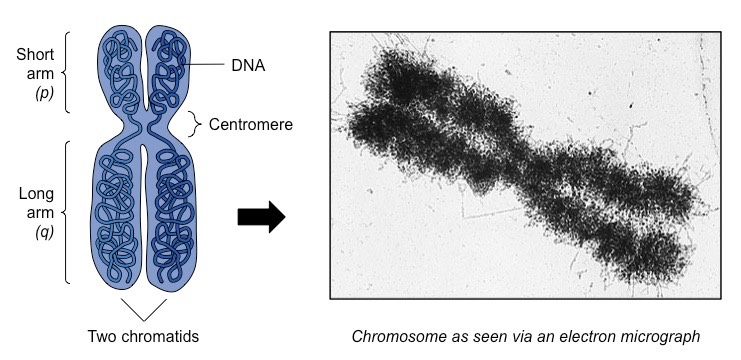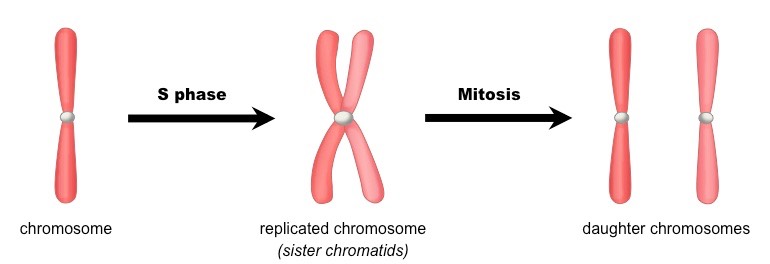![]()
Understanding:
• Chromosomes condense by supercoiling during mitosis
Chromatin versus Chromosome
Chromatin:
- DNA is usually loosely packed within the nucleus as unravelled chromatin
- In this unravelled form, the DNA is accessible to transcriptional machinery and so genetic information can be translated
- DNA is organised as chromatin in all non-dividing cells and throughout the process of interphase
Chromosome:
- DNA is temporarily packaged into a tightly wound and condensed chromosome prior to division (via supercoiling)
- In this condensed form, the DNA is able to be easily segregated however is inaccessible to transcriptional machinery
- DNA is organised as chromosomes during the process of mitosis (condense in prophase, decondense in telophase)
Organisation of DNA into a Mitotic Chromosome

Chromosome versus Chromatid
A chromosome is the condensed form of DNA which is visible during mitosis (via microscopy)
As the DNA is replicated during the S phase of interphase, the chromosome will initially contain two identical DNA strands
These genetically identical strands are called sister chromatids and are held together by a central region called the centromere
When these chromatids separate during mitosis, they become independent chromosomes, each made of a single DNA strand
Single Chromatid versus Sister Chromatid Chromosome

